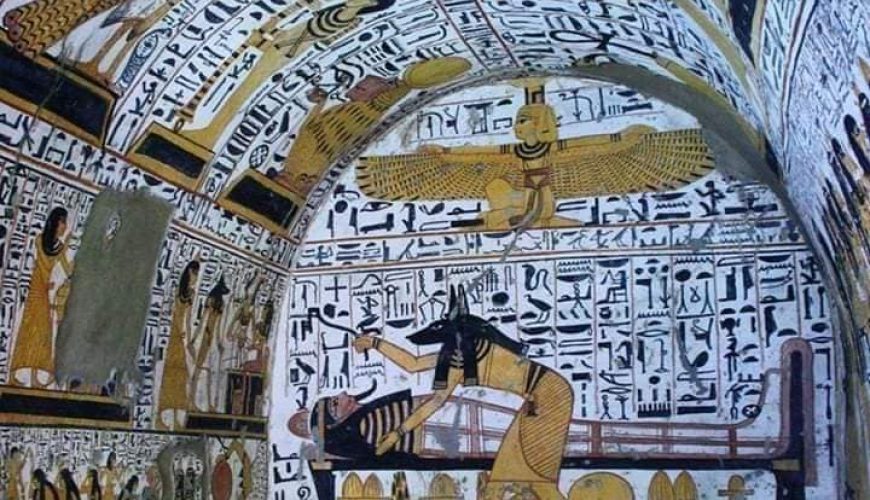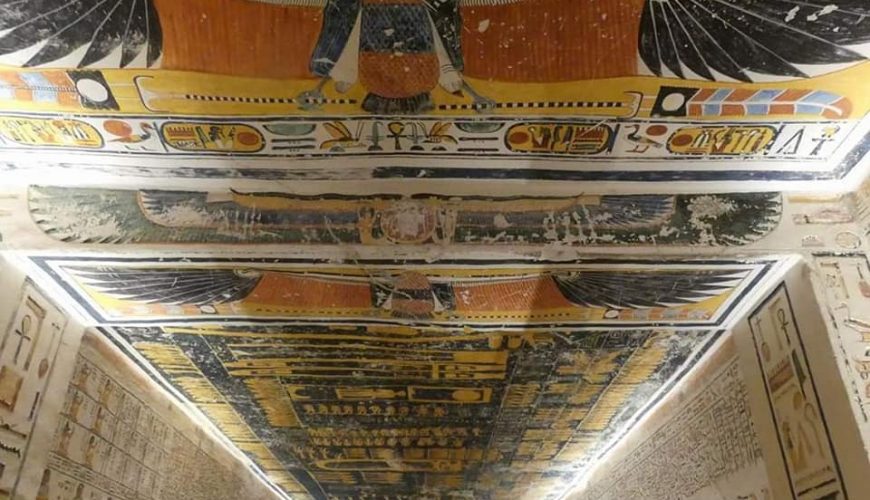The Valley of the Kings In Egypt
The Valley of the Kings is situated on the west bank of the Nile in Luxor, 25 km from the train station. It is one of the necropolises that, together with the city of Thebes, are classified by UNESCO as a World Heritage Site.
What is the Valley of the Kings?
It is a necropolis of ancient Egypt, in the vicinity of Luxor, where the tombs of most of the pharaohs of the New Kingdom (18th, 19th and 20th dynasties) and several queens princes, nobles and even some animals.
It was inaugurated by Thutmose I, the third pharaoh of the 18th dynasty, which, around 1500 BC, ordered the royal architect Inani, the construction of his tomb in the greatest of secrets.
It is believed that it was originally intended to be used as a family tomb. Still, with successive changes in power, and the construction of new tombs, the valley became a necropolis that remained in use for more than 400 years.
The Valley of the Kings comprises two parts: the East Valley and the West Valley. The former is one of the most visited places by tourists and is where most of the tombs are found.
How many tombs are there in the Valley of the Kings?
It includes 62 originally numbered graves as they were discovered but have now been renumbered following their location within the valley.
What tombs to see in the Valley of the Kings?
The best known and most visited tombs are those of King Thutmose I, Thutmose III, Ramses VI, Mrenptah and Amenhotep II; However, the tomb of Tutankhamun is the one that has deserved the greatest fame, since until today it is the only one to have been discovered with all its treasures, as it remained buried and therefore outside the range of looters until 1922.
The Valley of the Kings is where most of the pharaohs of the New Kingdom were buried, from when ancient Egypt was an empire that extended along the eastern coast of the Mediterranean (the 18th, 19th and 20th dynasties).
It was there that they were buried, for example, Thutmose III, Tutankhamun or Ramses II.
In the beginning, during the Old Kingdom and the Middle Kingdom, Egyptian kings buried themselves in pyramids built in the northern part of the country, near Memphis, which was the capital.
After the last pyramids were built, Egypt went into crisis, and the pharaohs lost their power. From Asia came a group of people who dominated the Delta area; they were the Hyksos. Meanwhile, the southern part of the country was left in the hands of a ruling family based in Thebes. Egypt was divided into two.
Not surprisingly, the princes of Thebes buried themselves in their city, on the west bank of the Nile.
When the Theban royal family managed to reconquer the entire country and its members became the new pharaohs, they decided that Thebes would be the new capital. They would not continue to build pyramids, as they were huge and easy to steal if no one was watching.
They preferred to bury their mummies in a more secluded and discreet place, where no one could get near, and they would be safer. The perfect place was found on the western shore of Thebes.
What was the Valley of the Kings like?
It was a secluded and lonely valley with plenty of space inside to excavate graves and whose access was a narrow passageway. It is what we know today as the Valley of the Kings.
However, they still liked the pyramids very much, as evidenced by the mountain at the foot of the Valley of the Kings, which has that shape. In Arabic, it is known as El-Qurna, which means “The horn.”
All the tombs in the Valley of the Kings are numbered according to the order they were discovered. The last of all was that of Tutankhamun, who makes number 62.
Egyptologists know them by their number and an abbreviation that they put in front, the letters KV, which stands for “King Valley”, Valley of the Kings in English.
What type of structure is the Valley of the Kings?
All the Valley tombs are different, but they can be divided into two main groups according to their structure.
The oldest ones are steep and start with a straight corridor. After several corridors and stairs, the corridor turns to the left, where the burial chamber is located. This type of tomb was built during the 18th Dynasty.
The second type of tomb is completely straight and has a little slope; it is like a long corridor, with stairs, corridors and rooms one behind the other. This type of tomb was the one that was built during the 19th and 20th Dynasties.
No matter what type they are, the tombs are decorated with reliefs and fragments from the Book of the Dead and other funerary texts.
These texts are like a kind of travel guide to get to the Other World since they explain to the Pharaoh the path he had to follow and overcome the obstacles that could be presented to him.
In this way, the pharaoh could be sure that his soul would arrive intact to the Hereafter to live eternally.



Comment (0)